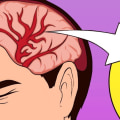Autism spectrum disorder (ASD) is a condition that typically begins in early childhood and can cause difficulties with social functioning, at school and work. Symptoms of autism can appear as early as 12 to 18 months of age, although some children may appear to develop normally during the first year and then regress between 18 and 24 months. It is important to note that autism does not develop in older children, adolescents, or adults. Research suggests that autism is caused by a combination of genetic and environmental factors.
Some children may show signs of autism as early as a few months old, while others may appear to develop normally for the first few months or years before displaying symptoms. Parents may notice the first signs of autism in their children around 12 to 18 months, such as not making eye contact or smiling when someone enters the room. It is also important to note that not all children will show signs of autism at 24 months, which is the typical age for detection. This means that efforts to reduce the average age of diagnosis can only go so far.
In one study, 221 out of 2,867 children with autism were diagnosed after age 6, despite having had previous evaluations. The more contemporary understanding of autism spectrum disorder has confirmed that it cannot “develop” in teenagers or adults. However, video records and studies have shown that some children do regress to autism, while others show signs of autism in childhood or remain at a plateau in their development. Girls are often overlooked when it comes to a positive diagnosis of autism because the model for the classic diagnosis is based on male behavior.
By looking at the brains of children with and without autism, scientists have discovered abnormalities in the brain regions that control language, social and emotional control in 90% of those with autism. Similarly, many girls with high-functioning autism are misdiagnosed (or not diagnosed at all) because their symptoms do not fit the stereotypes of disability. While there is no cure for autism spectrum disorder, intensive and early treatment can make a big difference in the lives of many children. Babies who become autistic may experience the world differently in the first year than those who will not have autism, which may contribute to later brain development in autism.
Adults with high-functioning autism may have milder social and communication challenges than those with more recognizable symptoms. The Autism Speaks Ad Council's multi-year public service advertising campaign highlights the importance of recognizing early signs of autism and seeking early intervention services. It is common for girls and people with high-functioning autism to be overlooked when they are young, but it is important to remember that autism does not develop so much in older children or adults; rather, it is diagnosed, especially in cases where an adequate diagnosis was not received when they were younger.





Leave a Comment